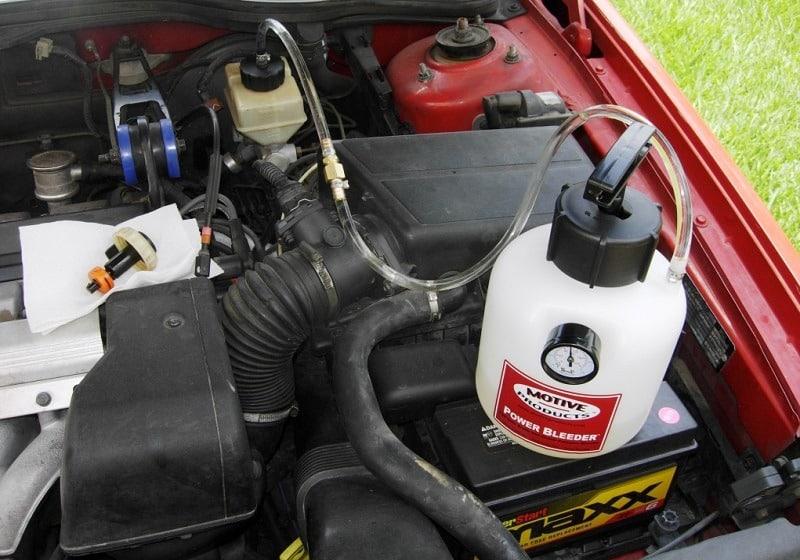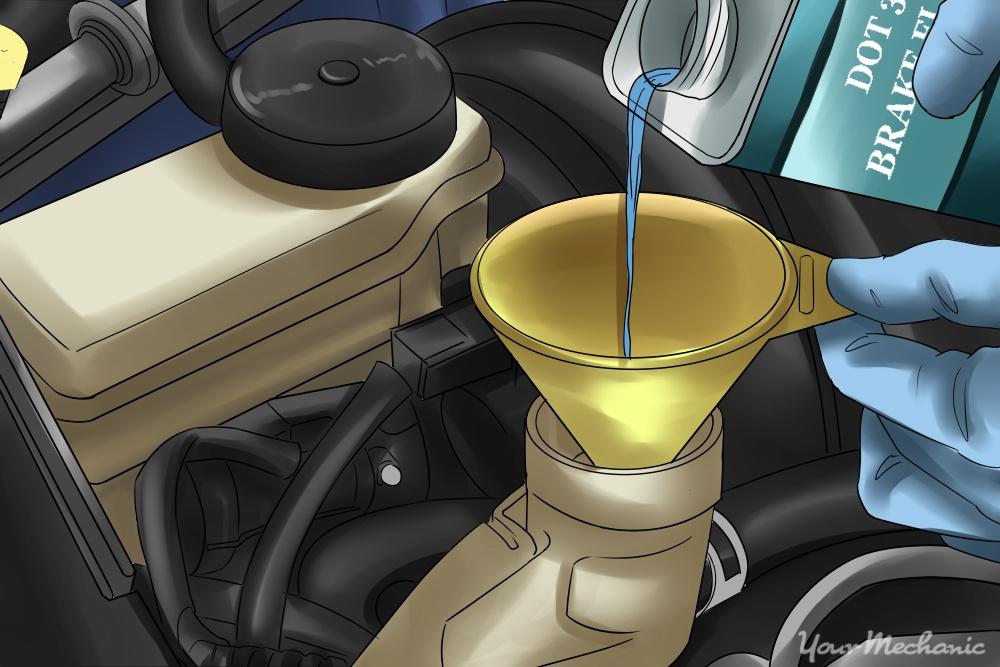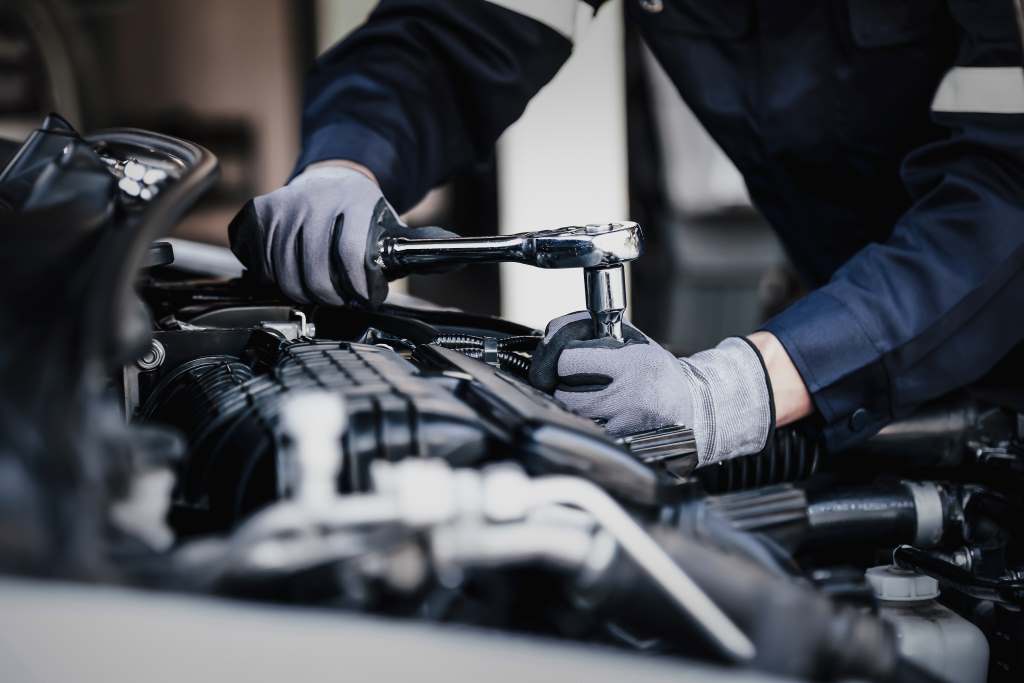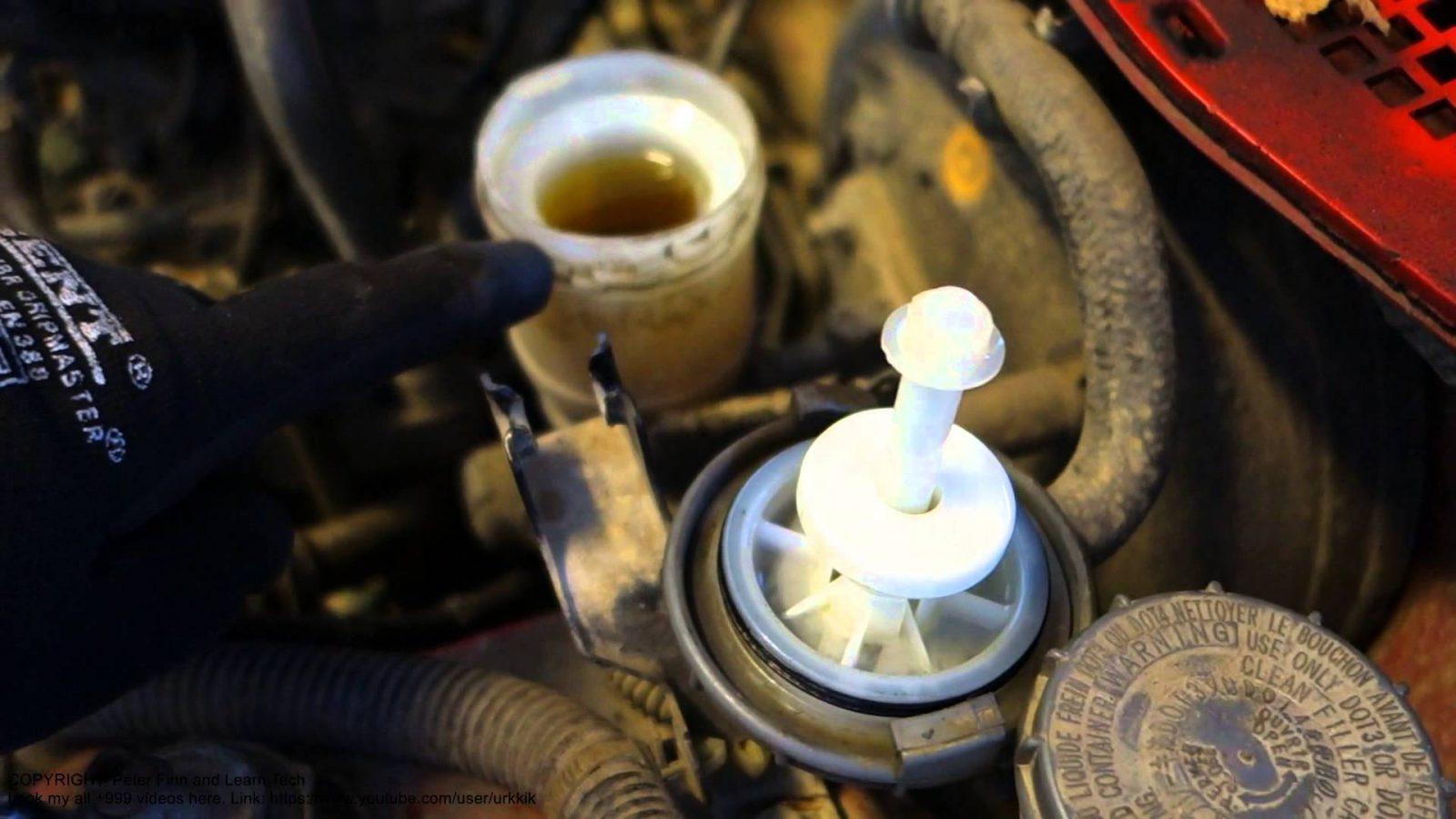You should always stay wary of any car oil leak, whatsoever. Therefore, to avoid these damages, you need to recognize the low clutch fluid symptoms.
Depending on the daily usage of the car, there are various reasons causing the level of the clutch fluid to reduce over time. As a consequence, you are likely to face problems with the transmission of the car. The gear may start behaving oddly and the ride may become jerky. And this is what we are going to share with you here.
Contents
What is Clutch Fluid?
Clutch fluid is commonly known as transmission oil or brake fluid, so you can add brake fluid to the clutch master cylinder. When it comes to the functioning of the engine, the fluid is a vital component.
And knowing about this fluid is extremely important to keep the transmission function working well.
Distinctive Low Clutch Fluid Symptoms
Since not all of us understand the mechanics of our cars, at times we may fail to recognize low clutch fluid symptoms. So, here are 6 symptoms that tell you that you must check and re-establish the requisite clutch fluid level.
1. Less Springing In Clutch Pedal
The right volume of clutch fluid is responsible for ensuring the smooth, accurate, and full movement of the clutch pedal. It ensures that the pedal springs back instantly as you remove the pressure from the clutch.
In the absence of the right level of the fluid, there will be loss of springing action. It could also be the case that the pedal fails to reach the end or gets stuck somewhere in the middle.
If that is happening, be sure to recognize it as one of the low clutch fluid symptoms.
2. Grinding Noise
Any unusual sounds from your car should always be a reason for worry. Low clutch fluid level can also cause a grinding sound while you operate the clutch pedal.
This is because of inadequate lubrication in the clutch system. If you do hear that unusual grinding noise, check the oil level.
At times, this sort of grinding noise could also be lacking engine fluid or low manual transmission fluid symptom. So, make sure you check both to avoid costly repairs later.
-

Keep your eyes on several low clutch fluid symptoms. (Photo: volvo850wagon) SEE MORE:
3. Vibration On Shifting Gears
Gear shifting ought to be a smooth process if both the engine and the transmission are in good shape. If you feel any resistance or stuttering or vibration while you shift gears, it is indeed the low clutch fluid level that’s causing it.
The inadequate volume of oil makes the movement of gears difficult and this causes any sort of resistance or vibration that you may feel while shifting.
It may be one of the symptoms of low gear oil symptoms. So, when that happens, simply check the level of oil and refill it to the requisite maximum mark.
4. Inefficient Sluggish Shifts
Most modern cars offer a very swift gear transition. If you experience your gear movement slower or less responsive than usual, you need to fill up the clutch oil reservoir. If you do not check this, driving will become a herculean task for you.
5. Lurching Back And Forth
Lurching of the car back and forth can be one of the signs of low fluid level. Inadequate level of clutch fluid can cause jerks and starts in the transmission movements. In this case, you won’t be able to achieve smooth motion.
-

Lurching of the car back and forth can be one of the signs of low fluid level. (Photo: Your Mechanic)
6. Gear Slippage
Low clutch fluid can cause gear slippage. When you shift gears, it is the clutch fluid that is responsible for transferring the force from the gear shaft to the gears.
In a scenario where there is a lack of lubricating agent, there isn’t enough hydraulic power to carry out the action efficiently. Irrespective of the intensity of gear, the transmission fails to engage. Gear Slippage is an evident result.
How To Check Transmission Fluid
Step 1: Search The Transmission Pipe
For many latest models of the vehicles, the transmission oil tube will be labeled. Normally, it’s orange or red. If not, you should check the owner’s manual to find the exact location because some cars have sealed transmission.
Step 2: Take A Dipstick
Pull the dipstick and take it back.
Step 3: Check Transmission Oil
Clean the oil stick with a tissue or a clean cloth, then reinsert it. After that, you go check the level of automatic transmission oil.
If it is in good condition, the oil is usually colored red or bright pink, without air bubbles or smell. If the gear oil is darker but still light pin tin, it might need to be replaced. The liquid tested should wait for around 1 minute to see if it spreads.
If not, the gearbox can be seriously damaged or the oil needs replacing. The other case is damage if it looks dark or brown with a burnt smell.
Step 4: Add Right Fluid Into Transmission
Before adding, make sure that you read the instruction manual carefully to know exactly what type of oil is suitable with your car and how much the quantity it needs.
To get more information about low clutch fluid symptoms, see the video below from Quality Ford!
How To Prevent Low Clutch Fluid Symptoms
Inspection on a regular basis
To avoid low clutch fluid difficulties, examine the clutch fluid level on a regular basis. Check the clutch fluid level every six months or 10,000 miles, whichever comes first. The clutch fluid reservoir is normally accessible and positioned near the brake master cylinder.
Remove the reservoir cover and assess the fluid level to check the clutch fluid level. The fluid level in the reservoir should be between the minimum and maximum markings. If the fluid level in the reservoir is low, add the required clutch fluid until it reaches the maximum mark.
Timely maintenance
Preventing low clutch fluid concerns requires regular maintenance of the clutch system. The clutch system should be examined and maintained in accordance with the manufacturer’s guidelines.
Replace the clutch fluid every two years or 30,000 miles, whichever comes first. This will assist to check that the clutch system is working correctly and that the clutch fluid level is correct.
In addition to routine maintenance, it is critical to treat any clutch system faults as soon as they emerge. Delaying repairs might cause more damage and increase the likelihood of low clutch fluid concerns.
FAQs on Low Clutch Fluid Symptoms
-
Can I drive my car if the clutch fluid is low?
Driving a car with low clutch fluid is not recommended. Inadequate fluid levels can cause poor clutch performance, trouble shifting gears, and probable clutch system failure.
It is best to treat the problem as soon as possible and have the clutch fluid level checked and topped up, as well as any required repairs completed.
-
How frequently should I inspect the clutch fluid level?
Checking the clutch fluid level on a regular basis, ideally during normal vehicle maintenance, is a recommended practice. Checking the clutch fluid level every few months or before lengthy travels is a fair practice.
Consult your vehicle’s owner handbook for precise suggestions. Regular inspections can help discover possible concerns early on and avert larger problems later on.

-
Can a clutch slide due to a lack of fluid?
The clutch plate begins to slip over time, resulting in a loss of power. This can be caused by a variety of circumstances, including driving in stop-and-go traffic or using a heavy foot. A low fluid level in the clutch system can also cause clutch sliding.
-
Should I add clutch fluid myself or seek expert assistance?
Adding clutch fluid is a reasonably straightforward activity that car owners can perform if they have the proper fluid and follow the manufacturer’s instructions.
If you are hesitant or uncomfortable completing this work, it is best to obtain expert help from a trained mechanic or technician who can assure appropriate technique and solve any underlying clutch system concerns.
-
Will a lack of clutch fluid allow the pedal to fall to the floor?
You may also note that the clutch does not release until the pedal is almost to the floor. It’s easy to attribute this symptom to a clutch that’s nearly worn out, yet it might just be a lack of clutch fluid.
It’s caused by less clutch fluid going via the hydraulic line, just like resistance in the shifting lever.
Remember it as an important maintenance tip to avoid low clutch fluid symptoms one every few months and during the scheduled service. Also, check our driving tips from experts to know how to keep the transmission going great.




Very important information.Please keep advising about various motor vehicle problems and how to handle them.
Reference above:
6. Gear Slippage
Low clutch fluid can cause gear slippage. When you shift gears, it is the clutch fluid that is responsible for transferring the force form the gear shaft to the gears. In a scenario where there is lack of lubricating agent, there isn’t enough hydraulic power to carry out the action efficiently. Irrespective of the intensity of gear, the transmission fails to engage. Gear Slippage is an evident result.
Wrong! the manual transmission clutch fluid has nothing whatsoever to do with transferring power from the gear shaft to the gears. With a hydraulic clutch, the fluid transfers force from the master cylinder to the slave cylinder to release the clutch, enabling easier gear shifting. having low clutch fluid will NOT cause gear slippage, quite the opposite: it could cause the inability to open up the clutch.